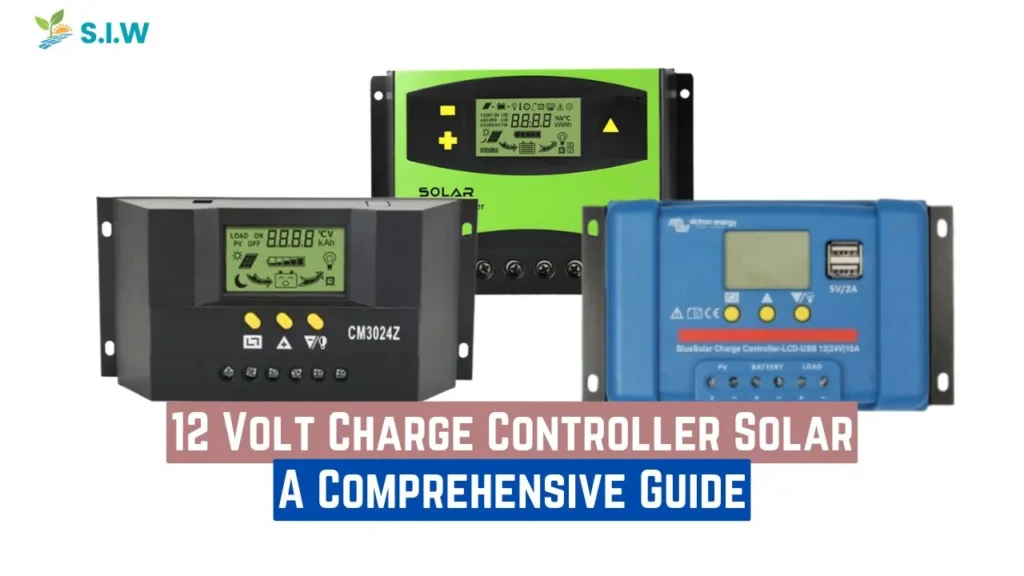Managing your solar energy system effectively begins with selecting the right charge controller. A 12-volt charge controller plays a vital role in maintaining battery health, regulating voltage, and ensuring energy is stored safely. In this article, we explore the key aspects, types, and usage of 12V charge controllers to help you optimize your solar system.
What is a 12-Volt Charge Controller?
A 12-volt charge controller is a device that manages the flow of energy between solar panels and a battery. It prevents overcharging and regulates the energy input to maximize battery life. This controller is essential in solar systems designed for off-grid or backup applications, typically using 12V batteries.
Why Use a 12-Volt Charge Controller?
- Prevents Overcharging
Without regulation, solar panels can supply excess energy to batteries, leading to overheating and damage. A charge controller ensures voltage remains within a safe range. - Prevents Over-discharging
Advanced controllers disconnect the battery when voltage drops too low, preventing permanent damage. - Maximizes Battery Performance
By optimizing the charge cycle, charge controllers extend battery life and improve energy storage efficiency. - System Monitoring
Many charge controllers come with display interfaces or Bluetooth connectivity, allowing users to monitor energy production and consumption in real time.
Types of 12-Volt Charge Controllers
1. PWM (Pulse Width Modulation) Charge Controllers
PWM controllers are widely used in smaller solar systems due to their affordability. They regulate voltage by adjusting the pulse width, making them ideal for 12V solar setups.
Pros:
- Affordable and reliable
- Suitable for smaller systems with minimal power loss
- Ideal for 12V lead-acid batteries
Cons:
- Lower efficiency compared to MPPT controllers
- Less effective in cold or cloudy conditions
2. MPPT (Maximum Power Point Tracking) Charge Controllers
MPPT controllers are more advanced, tracking the optimal voltage and current point to maximize energy conversion. They are ideal for larger or more complex systems.
Pros:
- Up to 30% more efficient than PWM
- Optimizes performance in varying light conditions
- Supports higher voltage solar arrays
Cons:
- More expensive than PWM controllers
- Requires proper sizing for best performance
How to Select the Right 12-Volt Charge Controller
Choosing the right charge controller depends on several factors:
- System Size: For systems under 400W, PWM controllers are sufficient, while MPPT controllers are better for larger installations.
- Battery Type: Lithium-ion batteries require charge controllers with programmable settings.
- Budget: If cost is a priority, PWM controllers offer an economical solution. However, MPPT controllers deliver better long-term performance.
- Environmental Conditions: Cold or shaded environments benefit from MPPT technology, ensuring consistent performance.
Installation and Wiring Best Practices
- Correct Cable Sizing: Use cables with appropriate gauge to prevent energy loss and ensure safe operation.
- Proper Grounding: Grounding the system protects against electrical faults and ensures user safety.
- Follow Polarity: Reverse polarity can damage both the charge controller and connected batteries.
- Weatherproofing: Use waterproof enclosures to protect outdoor components from moisture and extreme weather.
Troubleshooting Common Issues with 12-Volt Charge Controllers
- Controller Not Powering On: Check solar panel connections and ensure the battery is connected correctly.
- Battery Not Charging: Verify that the battery voltage is within the charge controller’s operating range.
- Overheating Controller: Install the controller in a well-ventilated area and ensure proper wire sizing to prevent overheating.
- Bluetooth or Display Malfunctions: Reset the device and ensure firmware is up to date.
Maintenance Tips for Prolonged Lifespan
- Check Wiring Regularly: Inspect connections for corrosion or loose wiring every few months.
- Clean Solar Panels: Dirt and debris reduce panel efficiency, affecting the charge controller’s performance.
- Update Firmware: For controllers with smart features, ensure the latest firmware is installed.
- Battery Monitoring: Test battery voltage periodically to prevent over-discharge and ensure the system operates smoothly.
FAQs
- What is the purpose of a 12-volt charge controller?
A 12-volt charge controller regulates the flow of energy from solar panels to batteries, preventing overcharging and over-discharging to extend battery life. - Which is better for a 12V system: PWM or MPPT charge controller?
PWM controllers are more affordable and suitable for smaller systems, while MPPT controllers offer higher efficiency and better performance, especially in varying light conditions. - Can I use a 24V solar panel with a 12V charge controller?
Yes, but only if you use an MPPT charge controller, as it can handle higher input voltages and step them down to 12V. - How do I choose the right charge controller for my solar system?
Consider factors like system size, battery type, environmental conditions, and budget when selecting between PWM and MPPT charge controllers. - Do I need to maintain my 12V charge controller?
Yes. Regularly check wiring, clean solar panels, and ensure the latest firmware is installed for smart controllers to maintain optimal performance.








